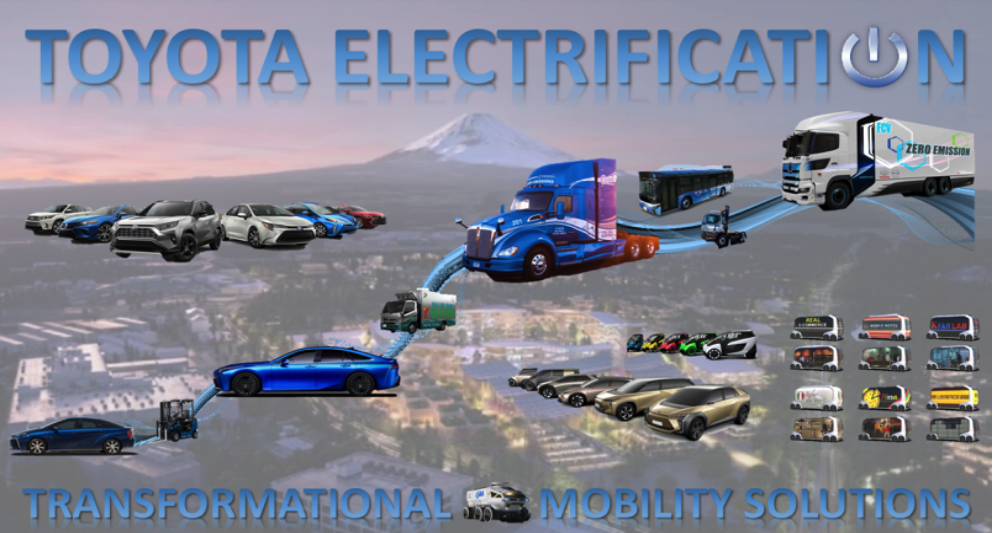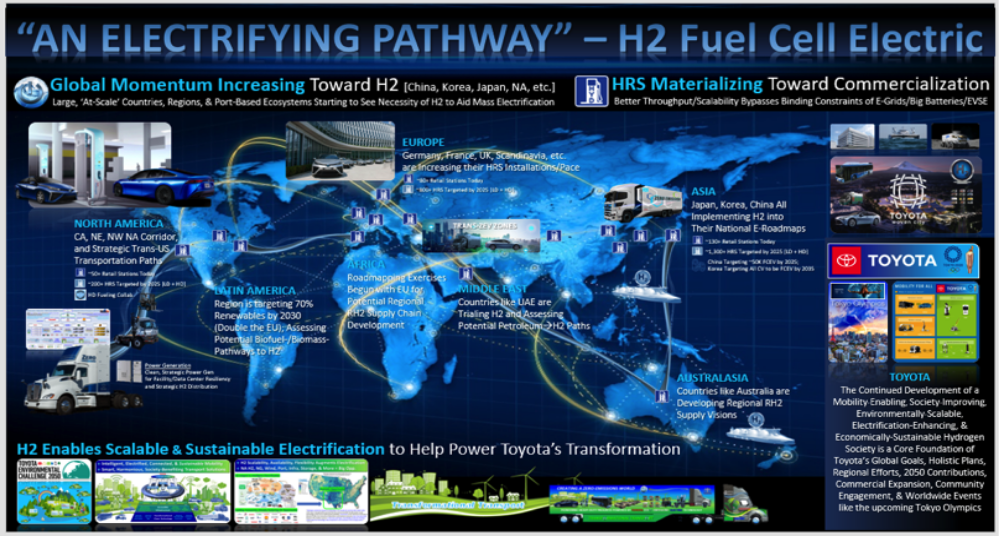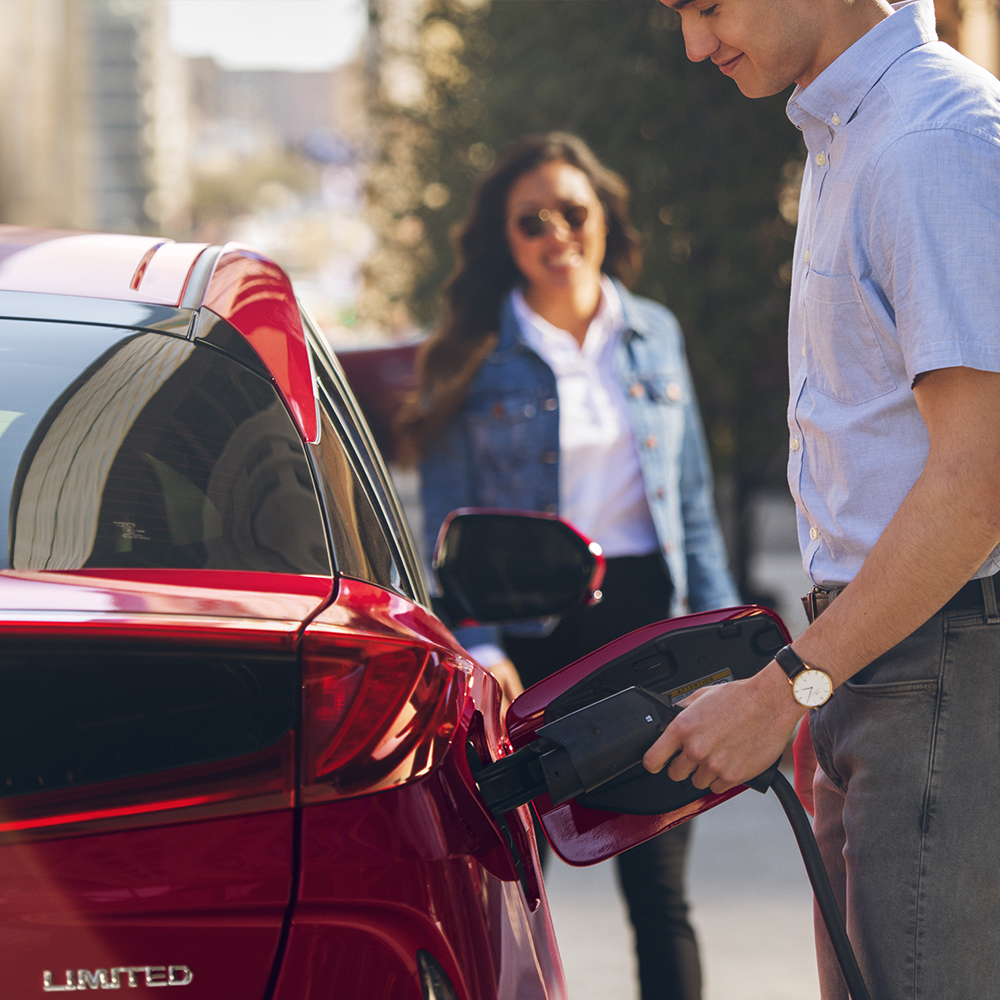One of the questions I‘m most frequently asked is, “When will electric vehicles become mainstream?” to which I invariably reply, “They already are.”
The electrification of the automobile is arguably the greatest force transforming our industry. Appearing as early as the 1800‘s, electricity has served us increasingly well across the automotive spectrum, giving rise to continuous advances in lighting, ignition, communications, processing, propelling, regenerating, all manner of efficiencies, and more. Today, electricity—along with the connectivity and autonomy that it enables—is powering the industry‘s transformation towards a new paradigm of sustainable mobility for all.
So, electrification is with us, it‘s pervasive, and it‘s transformative. And it‘s also a core strength of what we do at Toyota. Three exciting examples help illustrate this. The first is Toyota‘s dynamic and holistic “mobility for all” electric lineup set to transform the upcoming Tokyo Olympics into the greenest global games in history. The second is Toyota‘s development of market–shaping, transformational–transport–enabling electrification initiatives with worldwide collaborators like Uber, Shell, Panasonic, BMW, SoftBank, Subaru, BYD and Mazda. The third is Toyota’s commitment and, crucially, capability to offer an electrified version of every vehicle model we make by 2025.
And we‘re not stopping there. In fact, as revealed earlier this year, Toyota is teaming up with Japan‘s national aerospace and space agency to develop what many might call the ultimate, out–of–this–world, electric SUV—a pressurized manned lunar expedition rover—to take our advanced, versatile and durable Toyota fuel cell electric technology to the moon.
Our electrification roots themselves are grounded in another history–making launch—that of our very first hybrid–electric, the Toyota Prius, 20 years ago. With revolutionary vehicles like the Prius, and equally transformative descendants like our zero–emissions fuel cell electric Mirai, Toyota has long helped pioneer the path to electrification, providing a range of products intelligently engineered to meet our customers‘ diverse needs via varying levels of electric generation, regeneration and propulsion.
This layering, or stratification, of electrification is perhaps best illustrated by its efficiency and emissions benefits. If we begin with a vehicle powered by a conventional gasoline-fueled internal combustion engine, adding an initial layer of electrification via a regenerative braking, battery and motor system enables virtuous reductions in fuel consumption, engine size and harmful emissions. An example of this hybrid–electric approach is the versatile new 2020 Toyota Highlander Hybrid SUV, with its best-in-class EPA-estimated 35 combined mpg fuel economy rating, Super–Ultra–Low–Emissions output, and advanced AWD.
Adding a second level of electrification—in the form of expanded battery, electric motor, power control and operating capabilities—enables even greater performance, efficiency and emissions gains. An example of a vehicle incorporating such advantages is the powerful new 2021 Toyota RAV4 Prime hybrid–electric plug–in, which allows customers to have their cake and eat it, too. Simultaneously possessing both electric and conventional fueling capability, the RAV4 Prime provides exceptional range, rapid acceleration and the commute-changing ability to serenely operate on battery power alone for up to 42 miles of zero–emissions driving. Overall, the RAV4 Prime offers owners a persuasive package of over 300 horsepower, EPA–estimated 94 MPGe efficiency and 600 miles of total driving range.
Highest on our efficiency scale is the third stratum of electrification—pure electric vehicles. These completely replace carbon–emitting internal combustion engines with electric motors to provide silent, smooth, clean propulsion. Traditional pure electric vehicles are powered by batteries upsized to provide sufficient performance, range and longevity. An example of such a battery–electric vehicle is the Accessible People Mover, or APM, that Toyota will introduce to help transform transport at the Tokyo Olympic and Paralympic Games.
An even more promising form of pure electric mobility is the fuel cell electric vehicle, such as the trailblazing Toyota Mirai. Like the original Prius, the Mirai has pioneered a new era of electrification for Toyota, and in its initial generation has now sold over 10,000 global units. The second-generation Toyota Mirai stands poised to launch within the year, with dramatic advancements in style, volume, versatility, features and performance—including a leap to over 400 miles of pure, clean, zero-emissions driving range.
Vehicles like the Mirai utilize hydrogen to generate their own electricity onboard, while emitting nothing but water vapor from the tailpipe. Fuel cell electrics overcome many issues associated with battery electrics — lengthy recharging times, reduced range, diminished performance and lower infrastructure throughput. Fuel cell electric vehicles do require hydrogen fueling stations, but over 40 such retail stations and counting already exist in California to serve a growing population of thousands of vehicles. Many more hydrogen fueling stations are under development with the prioritized support of the state, and station development in the Northeast is also underway. For fundamental reasons such as these, our fuel cell electric vehicle program — based on our core, layered, hybrid–technology strength — is a central thread woven into Toyota’s global electrification strategy (see Figure 1)
F1 / Toyota’s Global Electrification Strategy

Perhaps the most exciting aspect of fuel–cell–driven electrification, however, is its scalability. The need to reduce emissions across the transportation, commercial and community sectors is dramatic, increasing and global. And where these sectors converge, such as in the teeming goods–movement in port communities and their surrounding regions all over the world, this emissions issue has become critical.
A key means of addressing this problem is to electrify commerce, converting aging and polluting diesel facilities and fleets to pure, zero–emissions, electric generation and propulsion. And Toyota is helping directly architect this transformation through groundbreaking efforts like our holistic Woven City for a greener future and through our pioneering Project Portal Class 8 fuel cell electric truck initiative.
Established as a feasibility study to explore the potential application of our light–duty Toyota Mirai fuel cell electric technology to the high–emission heavy–duty truck sector, Project Portal has progressed rapidly from concept phase, to a pair of advanced demonstration prototypes, and to the development of a large–scale, $82 million pilot program featuring 10 in–service trial trucks in conjunction with the State of California, the Los Angeles ports, Kenworth, Shell, UPS and many more. Through this transformative “Shore to Store” pilot and additional synergistic collaborations such as with Hino Trucks, Toyota's Project Portal is opening green gateways and helping prove that heavy–duty hydrogen fuel cell electrics—with their range, weight, performance, refueling time, cargo capacity and infrastructure scalability advantages beyond battery electrics—have the potential to be the optimal solution for electrifying — and revolutionizing — global transport.
This transformational potential of hydrogen fuel cell electric power, and the gathering global momentum behind it, is visually summarized in Figure 2 below. Overall, fuel cell electric vehicles offer a compelling combination of market and societal benefits, particularly at scale, and, therefore, are an emerging core of Toyota’s layered, global, customer-needs-based portfolio approach to electrification.
F2 / Electrification via Hydrogen Fuel Cell is a Compelling Combination
H2 supply, scalability & renewability potential = good fit for ZEV freight transport

So, in summary, when someone asks you, “When will electric cars become mainstream? And how is Toyota participating?” you‘ll be able to smile and reply, “They already are, and we’re helping lead the way.”

Ash Corson
Corporate Strategy & Planning
Toyota Motor North America, Inc.
